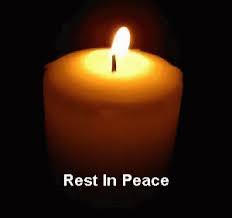In seminars, I ask audiences, “What is the reason that African American History Month is in February?” There is always a pause, followed by the same answer, “Because it’s the shortest month of the year,” which brings about laughter. The answer, though, to why African American History Month is in February is to honor the birthdays of AbrahamLincoln (February 12) and Frederick Douglass (February 14). Douglas was the first prominent American recovering alcoholic (White, Sanders, Sanders, 2006). Douglass was also the leader of the Black Temperance movement. This history has been shared with audiences of addictions counselors and inmates in prisons (disproportionately African Americans with substance use disorders). Most are unaware of this history, and many are inspired by it.
The Online Museum of African American Addictions, Treatment and Recovery
African American History Month was originally Black History Week, created in 1926 by historian Carter G. Woodsen. It was celebrated the second week of February and was enthusiastically received. In 1970 it expanded to African American history month. Woodsen noted that the contributions of African Americans to American society were scarce in the literature. His original intent was the encouragement of the teaching of African American History in public schools (Scott, 2011). Writings on the treatment of addictions and recovery are also scarce in the literature, and thus we developed the Online Museum of African American Addictions Recovery.
The purpose of the museum is to serve as a single site where individuals interested in the history of addictions, treatment, and recovery among African Americans can be found. The museum includes 22 exhibits. You will find everything from scholarly articles that focus on engagement strategies with African American clients seeking recovery and effective approaches to cross-cultural counseling; non-traditional approaches to recovery for African Americans, and writings on innovative approaches to the prevention and treatment of fetal alcohol syndrome in African American communities. Historians may be interested in the exhibits that tells the story of substance use, treatment and recovery in African American communities from multiple perspectives, including literature, popular culture, biographies of historical pioneers, motion pictures, and music. Click on the music links and hear songs by Whitney Houston, Michael Jackson, Prince, Billie Holiday, Miles Davis, Jimmy Hendricks and numerous hip hop artists. For counselors who want to be more effective in their work with African American clients, the museum also lists various educational workbooks, available for free download, DVDs, and videos.
As you enter the museum, the first thing you notice is a picture of the famous blues singer Billie Holiday. Her story is living proof that advocacy, culture- and gender-specific services have been a need for a long time. As a youth, Billie Holiday lived in a brothel and at the age of ten was sexually assaulted. To numb the pain, she developed an addiction to alcohol and heroin. Music along with drugs was her primary medicine for trauma. In the 1930's war on drugs, the Federal Bureau of Narcotics singled out Billie Holiday as a primary target of the war. She was spied on by the Bureau; informants were used to testifying against her, and she was frequently arrested. Billy Holiday went in front of a judge and pleaded for treatment. She went on to state, “Imagine if the government chased sick people with diabetes. Then sent them to jail and they could only get insulin illegally. If we did that everyone would know we were crazy, yet we practically do the same thing every day to sick people hooked on drugs,” (Hari, 2015). Peter Bell was quoted as having said addiction is best treated when the cultural context in which it develops is taken into consideration (Sanders, 2015). The museum offers the historical and current context of treatment and recovery for African Americans seeking recovery. We hope you enjoy the museum.
References
Hari, J. (2015). Chasing the scream: the first and last days of the war on drugs. Bloomsbury Publishing USA
Sanders, M (Ed.). (2016). Substance Use Disorders in African American Communities: Prevention, Treatment and Recovery. Routledge.
Scott, D.M. (2014). The Origins of Black History Month. Association for the Study of African American Life and History: https://asalh100.org/origins-of-black-history-month/
About the Authors
Mark Sanders, LCSW, CADC, is the curator of the Online Museum of African American Addictions Recovery. Mark is an international speaker on Addictions Recovery and author of five books on addictions recovery. Mark has had two stories published in the New York Times best selling book series, Chicken Soup for The Soul.
Gabriela Perez, BA, is the developer of The Online Museum of African American Addictions Recovery. Gabriela has worked in everything from teaching English as a second language to working in Chicago as a case manager with youth ages 17 to 21. Currently, Gabriela is a pursuing her Masters in Urban Planning and Policy at the University of Illinois at Chicago, with a concentration in community development.

















